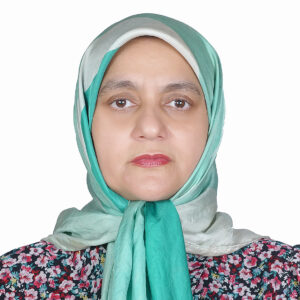Thermal comfort for women is not just a physical aspect; indeed, its potential impact on cognitive performance and workplace efficiency cannot be ignored. Indu Revikumar, Features Writer, Climate Control Middle East, has the story…
In the Middle East region, where scorching summers and chilly or mildly chilly winters are a part of life, the pursuit of thermal comfort is an essential aspect of wellbeing. Amid this climatically diverse backdrop, the debate over indoor temperature preferences, often labelled the “battle for the thermostat”, has captured the attention of households. In 2019, a global study, titled “Battle for the Thermostat: Gender and the Effect of Temperature on Cognitive Performance”, cast fresh light on this debate, and its findings not only underscored the significance of the thermostat tussle beyond mere physical comfort but also unveiled its potential impact on cognitive performance and workplace efficiency. The study suggested that in workplaces striving for gender balance, the strategic adjustment of temperature settings above traditional norms might be the key factor to optimising cognitive performance and overall productivity.
Overcooling of office buildings is a prevalent and critical issue in the Middle East region, as the search for relief from soaring temperatures in the region often leads to excessively cooled workplaces, impacting not only energy consumption and costs but also the wellbeing and productivity of individuals within these spaces, says Pakinam Eid, Senior Sustainability Consultant, AESG. She further says that despite technological advancements and significant improvements in our understanding of thermal comfort in buildings, many people still feel uncomfortable in the work environment. She says: “Indoor thermal comfort can be influenced by several factors, including building physics and orientation, building location and structure, occupant density, ventilation strategy and mode of operation. And we require a holistic approach that considers gender-sensitive perspectives and climate-specific considerations.”
Eid also highlights the importance of including HVAC systems that allow individuals to control their immediate environment, considering individual preferences for temperature, airflow and humidity. She says that office spaces should be divided into zones to provide adjustable temperature controls within these zones and allow employees to personalise their immediate environment. Furthermore, she touches upon the topic of dress codes, and she says that businesses should establish flexible dress codes that permit appropriate office attire, considering different temperature preferences and variations in how men and women experience thermal comfort, as well as educate employees, particularly women, about the importance of dressing in layers to manage their thermal comfort.
Joining the conversation, Sangeetha B, CEO & Founder, Amantra FM, says sweltering hot summers and high levels of humidity drive building owners and operators in the Middle East region to significantly reduce indoor temperatures, inadvertently leading to sub-optimal temperatures in offices, particularly for women, whose clothing styles tend to be poles apart from men’s. Furthermore, underlining the fact that women tend to feel colder or hotter than their male counterparts due to lower metabolic rates, she says that strategies to keep the internal temperatures at optimal level must be implemented, such as avoiding large windows on the west side, where the heat from the setting sun could be higher than in other directions, or setting up optional gendered workspaces with different thermal settings.

Sangeetha B
She says, ”Ideally, the optimal temperature range must be from 22-24 degrees C, depending on the work being carried out — working with heat or heavy-duty labour may require lower temperatures.” She adds that maintaining an equilibrium is challenging, unless the cause and effects are identified and discussed in forums within and outside the organisation. Sangeetha says, “If the organisational discourse also includes humidity control and Indoor Air Quality (IAQ), that will help improve the cognitive capabilities and health of people working in these spaces while ensuring gender equity in thermal comfort.”
Maryam Bakhsheshi Akhlaghi shares a similar perspective as Sangeetha and Eid and says that a multifaceted approach is required to combat the issues of overcooling in office buildings and address its impact on women’s wellbeing and productivity. Akhlaghi, who is the Manager of Maryam General Maintenance and Yazdan Contracting, and Owner and Manager of Aflak Alkhyr Technical Services, says that office design should begin by creating thermal zones within the office and allowing temperature variations to cater to different preferences, ensuring women’s comfort. She says, “Providing individual or zone-level temperature control for occupants, using occupancy sensors to optimise cooling based on room occupancy, investing in research about gender-sensitive thermal comfort solutions to account for physiological differences between genders, encouraging breathable clothing and educating employees about the importance of thermal comfort will foster a balanced, inclusive thermal environment, benefiting everyone in a region with challenging climatic conditions.
Joining the conversation, Sandra Bou Madi, Head, Business Development, Taqeef, says Taqeef has been researching the issue of perceptions of thermal comfort since 2020 and says that according to the outcome of the research in the form of a report, a slightly cooler temperature of 22 degrees C aids the highest level of work productivity for men, whereas, women have better mental agility at higher temperatures (26 degrees C). She says, “A difference of up to 4 degrees C between women and men is significant and raises questions of over-cooling and the impact this has on energy use.” Madi further says that businesses in the Middle East region can address the issue of overcooling in office buildings with a combination of awareness about controlled parameters and variations in individual thermal needs and by investing in smart cooling technologies, which will help to reduce the environmental impact of cooling and make comfort more tailored, responsive and automated.

Maryam Bakhsheshi Akhlaghi
Shifting the discussion to how the gender pay gap in the Middle East region intersects with the impact of heat-related income losses, Sangeetha says women in the region predominantly work out of offices due to existing social norms. She points out that despite the diverse career choices available today, women remain primarily confined to offices, partly due to self-limiting beliefs. She says that breaking those barriers and increasing women’s participation across sectors will enable them to voice their concerns about thermal discomfort and other issues. “Encouraging participation will require the creation of women-centric office spaces and reserved roles for women,” she says. “That way, we can treat the problem instead of the symptoms.”
For her part, Akhlaghi says the existing gender pay gap in the Middle East region intersects with the impact of heat-related income losses in a way that exacerbates women’s financial instability and overall wellbeing. Women in the region, she says, often earn lower wages than their male counterparts for similar work, contributing to income disparities. “When heat-related challenges, such as reduced productivity due to extreme temperatures or health issues like heat-related illnesses, affect income levels, women are disproportionately affected,” she says. “They may face lower earnings and reduced career advancement opportunities, further exacerbating financial instability.” Furthermore, she says, the intersection of the gender pay gap and heat-related income losses has broader implications for women’s well-being in the region, as it can lead to increased economic vulnerability, limited access to healthcare and education, and reduced overall quality of life. Akhlaghi also emphasises the importance of addressing gender pay disparities and heat-related challenges and says it is crucial to improving financial stability and wellbeing for women in the Middle East region.
Awareness of thermal sensitivity
Sangeetha, Akhlaghi and Eid share similar thoughts on women’s awareness of the importance of thermal comfort and the issues of over-cooling. While Sangeetha points out that women’s awareness of thermal issues is growing, albeit at a lower rate than is necessary for positive change, Akhlaghi and Eid underline the fact that the awareness among women is influenced by educational, cultural, geographical and socio-economic factors.
Sangeetha further says that while education does correlate to higher awareness, its impact can be hindered by sociocultural, geographical and economic roadblocks. She says that only through multipronged approaches can women’s understanding of complex subjects like thermal comfort be effectively and decisively addressed, and that institutional and individual efforts will be necessary.

Pakinam Eid
For her part, Eid says that physiologically, women perceive temperature changes and are influenced by factors like hormonal fluctuations, and it is important to understand that the lack of thermal comfort can lead to discomfort, fatigue, decreased productivity and increased stress levels among female employees, impacting their overall wellbeing and job satisfaction.
She says that awareness encompasses a broad spectrum of factors in society, ranging from comprehension of policies to equitable access to heating and cooling resources and adherence to workplace regulations. In addition, she says, environmental awareness extends to encompass the effects of climate change and the imperative of sustainability. “Education plays a pivotal role in fostering understanding, while culture significantly shapes our perceptions, and one’s geographical location often influences personal experiences,” Eid says. She also points out that elevating awareness levels and ensuring equitable access to resources can catalyse deepening comprehension and spur action concerning thermal sensitivity issues, benefiting women and society.
Strategies for thermal comfort
To integrate thermal comfort into discussions about gender equality and economic empowerment in the Middle East, Eid says, governments and organisations can take holistic approaches, such as researching specific thermal comfort needs of women and understanding how temperature affects their productivity, health and overall wellbeing. Moreover, she says, raising awareness and educating communities and organisations about the impact of thermal comfort on women’s productivity and health is key. Eid also highlights the role of governments and says they must incorporate thermal comfort considerations into urban planning, building codes and workplace regulations to ensure appropriate thermal comfort integration in indoor and outdoor spaces, especially with the specific needs of women. She also says that governments should encourage and promote energy-efficient industries and sustainable heating and cooling solutions, which will aid in improving women’s health and wellbeing by addressing thermal comfort and promoting sustainable practices.
For her part, Sangeetha says, any effort to shape the narrative of thermal comfort in the context of women’s workplace experience will fail to yield desired outcomes without the presence of key stakeholders – that is, women. So, she says, the first order of business should be the creation of a women-chaired committee consisting of female leaders across economic sectors to bring diverse, first-hand experiences to the table, get an interdisciplinary perspective, and co-create actionable policies. Concurrently, she says, challenges like gender pay gaps should be tackled methodically. “It will help if regulatory bodies mandate equitable pay and transparency in grading structure,” she says.

Sandra Bou Madi
Sangeetha also touches on the fact that climate change disproportionately impacts vulnerable populations, including women. That, she says, underscores the need to prioritise a climate change-linked phenomenon like frequent heat waves, and therefore, human resource departments of organisations should be mandated to periodically submit progress reports of women’s workplace wellness, including thermal comfort.
Meanwhile, Akhlaghi says governments and organisations in the Middle East region can advance gender equality and economic empowerment by acknowledging the pivotal role of thermal comfort in women’s wellbeing and productivity. “This will necessitate incorporating gender-sensitive cooling strategies into policies, bolstering awareness campaigns, conducting relevant research, offering financial incentives, developing gender-responsive infrastructure, providing targeted training programmes, cultivating strategic partnerships, and rigorously enforcing existing regulations,” she says. Furthermore, Akhlaghi underlines the fact that these comprehensive measures ensure that women’s health, wellbeing and financial security are given due consideration and will ultimately contribute to a more equitable and inclusive society.
The importance of inclusive indoor workspaces
Creating comfortable, productive and inclusive indoor workspaces in the Middle East region for women involves considering cultural, environmental, and ergonomic factors, says Eid. She says that implementing flexible work hours to accommodate diverse responsibilities, designing spaces considering gender-specific requirements, ensuring appropriate facilities, privacy and safety for women and providing ergonomic furniture to reduce physical strain, especially for pregnant women, can ensure inclusive indoor work spaces.
For her part, Sangeetha says, technology will play an integral role in creating indoor workplace environments that are comfortable, productive and inclusive. She says that the deploying of data-driven, cloud-enabled solutions can proactively tackle indoor contaminants and enable working in unison with HVAC systems. She further says that such an infrastructure can provide adaptive comfort based on real-time analysis of external temperature, indoor contamination and occupant requirements, ensuring the well-being of women and men alike.
Meanwhile, Madi says, indoor workspaces in the Middle East region can be made more comfortable, productive and inclusive of women’s needs by encouraging comfort, controlling the thermal environment and creating awareness to ensure cultural or behavioural change. Elaborating, Madi says that through ensuring that the temperature is set to a comfortable level for both men and women; providing employees with the ability to control their thermal environment through activities, such as positioning desks strategically, according to the proximity of sources of cooling; and creating office-awareness campaigns to raise awareness about summer AC consumption in offices, employers can create workplaces that are more comfortable, productive and inclusive of gender-specific needs.
Copyright © 2006-2025 - CPI Industry. All rights reserved.